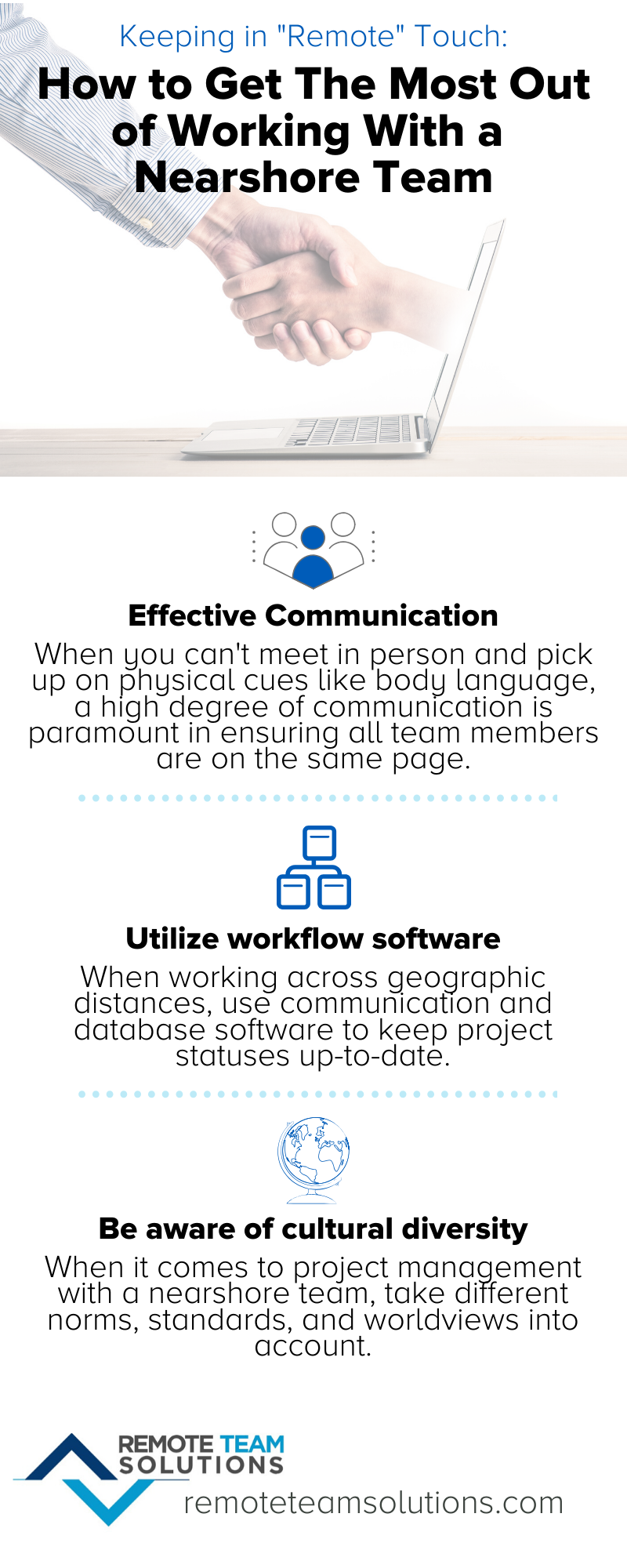Whether you’re overseeing a remote web design team or other nearshore employees that you don’t get face-to-face time with, there are several things you can do to bridge geographical and cultural gaps when collaborating with employees in different areas and from diverse backgrounds. Below are some tips on how to communicate with your nearshore teams to build trust, solidify culture, as well as achieve brand and workflow cohesion.

Consistent Communication
Over-communicating isn’t necessarily a bad thing! When it comes to long-distance or cross-cultural professional relationships, a high frequency and level of detail are vital — even if it feels like “too much” at times. In the absence of in-person gatherings or the opportunity to hold physical meetings where you can read cues such as body language, it’s better to “overshare” information to ensure all parties are always on the same page.
Available Hours: Finding Common Ground
Whenever possible, determine hours when both parts of your team (on-site and nearshore) are available. It’s imperative to have a window when all team members can log on simultaneously, even if it’s only a few hours per week. This schedule allows your team members to know when they’ll be able to live chat and sets expectations about when real-time conversations can occur.
Set Aside Some Facetime
While communication through reliable messaging platforms is excellent, it’s still vital to get some “facetime” when working with your offshore team — even if it’s digital. There’s something impactful about seeing a team members’ face, and video chats can be just as productive as in-person meetings.
Modern Workflow Platforms
There are lots of tools available to facilitate communication with remote teams, from Zoom to Slack to JIRA. When working across sizable geographic distances, utilize software to share project statuses, connect with your team members, and help overall communication. Most of these tools allow for commenting and archiving content, providing you a searchable, referenceable database of notes and information from various team members. These records are especially helpful when parts of your team are working at varying times or logging hours in different time zones.
Take Culture into Consideration
While development may seem universal, cultural differences may still impact communication and function. Be aware of cultural differences that exist, and make sure you consider the idea that not all team members may be viewing or interpreting things in identical ways. Some examples include being sensitive to varying standards and norms and never making assumptions.
When managing a nearshore team, from remote video editing teams to engineering design teams, the above communication practices will ensure the entire team is cohesive and achieves collaboration on as many fronts as possible. To learn more about ways to manage your remote team, get in touch with Remote Team Solutions today!
